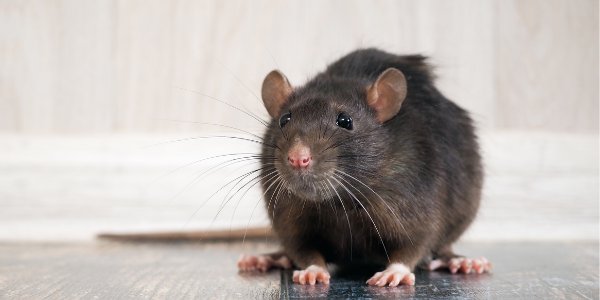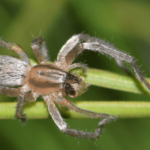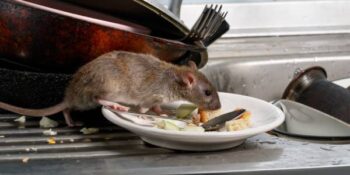
The temperatures are dipping, festive fall drinks like Pumpkin Spice Lattes are on coffee shop menus, and fall is officially here! While it’s finally the perfect time to enjoy Long Island’s fall foliage and fun outdoor activities like apple picking and scenic hikes, for homeowners, it’s also the time to prepare for the arrival of fall and winter pests like mice and rats.
Mice
Why Do Mice Come in the House? 
As the temperatures get lower, mice will seek nooks and crannies to cozy up in. Since they can make their way into crevices as small as a dime, it’s quite easy for these little guys to get into your home, given the opportunity. House mice in particular are commensal rodents, meaning they’re at least partially reliant on humans for their food, water, and shelter—they have few hesitations about moving in with you!
Where Do Mice Hide in a House?
Typically, mice can be found living and nesting behind walls, in attics, basements, crawlspaces, and behind large appliances. These pests are avid chewers of wires, pipes, insulation, flooring, and drywall, making them quite dangerous to the structural integrity of your home, as well as personal items like furniture and clothes.
Rats
What Causes Rats to Come in Your House?
Like mice, rats will enter your home for warmth and comfort when given the chance. If you’re cold, they’re cold, and a heated home full of hiding places is an ideal place to take up shop. Though the commonly seen Norway Rat is usually around 13-17.5 inches long (compared to a mouse’s 5-8 inches in length), these rodents need just slightly more clearance than that dime-sized space required of a house mouse in order to gain entry to your home.
Where Do Rats Hide?
Norway Rats are nocturnal, and often hide out in basements and on ground floors, underneath debris, and in crawl spaces. In addition to contaminating areas with urine and feces, Norway Rats have powerful jaws and teeth that can damage almost anything, including pipes, flooring, drywall, and personal belongings.
Why Rodent Proofing is Important This Time of Year
Because rodents like mice and rats can easily fit through tiny spaces and will be eagerly seeking out comfortable shelter for fall and winter, it’s important to take a few precautions to rodent-proof your house and protect your home and family from these pests before it’s too late.
How to Get Rid of Mice in the House
- Minimize entry points. As mentioned, mice and rats need very little clearance to gain entry into your home! Repair holes, seal cracks, and caulk around your windows.
- Inspect items, such as fall decor, packages, firewood, and shopping bags before bringing them indoors to prevent a rat or mouse infestation in the house.
- Replace any loose weather stripping around your home.
- Eliminate food sources—keep that kitchen clean and crumb-free (don’t forget about your pets’ food!)
- Inspect your roof (or have it inspected) to ensure there aren’t any entry points for pests via loose shingles or damaged vents.
- Call the pros—Suburban Exterminating—and schedule an appointment to get your home protected from mice and rats
Protect Your Home from Rodents With Suburban Exterminating
To protect your home, family, and pets from rodents this winter, choose Suburban Exterminating’s home pest control services that will keep these critters out before they get in. Call or text (631) 864-6900 to schedule an appointment today!





